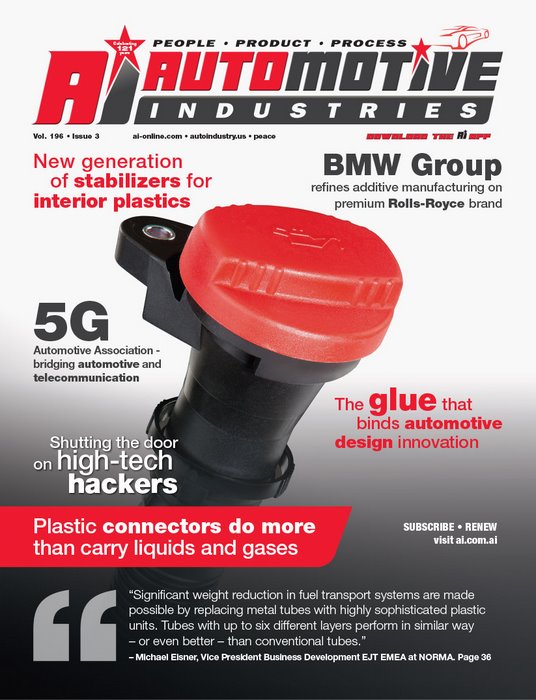
A highly complex and increasingly sophisticated network of tubes and couplings is needed to keep fluids and gases flowing for both internal combustion and electric vehicles. One of the global leaders in the development of plastic tubes and connectors is NORMA Group.
Automotive Industries (AI) asked Michael Eisner, Vice President Business Development EJT EMEA at NORMA to tell us for which applications the connectors have been developed.
Eisner: NORMA Group has a wide range of quick connectors developed for all fluid-carrying systems within in passenger cars, trucks, off-road and agriculture machines as well for all industrial applications. Each connector type has been specifically optimized for its application area in terms of life-time durability, weight and ease of assembly. For example: the Safe and Single Lock connector from our range of Autoline fuel connectors offers the industry standard for doublelocking functionality, required for critical fuel applications. Our “push&seal” quick connectors NORMAQUICK® V2 can be applied on both plastic and metal spigots, and the S connector is perfect to connect media-carrying lines. Our NORMAQUICK®MK connectors help achieve significantly reduced permeation rates. For charged air system applications, the TWIST III quick connector series meets extremely tough requirements, especially in low-emission vehicles.
AI: You have been awarded Volvo Car Corporation as an outstanding supplier for the first time this year. What was the award for and what did it take to achieve it?
Eisner: The award was presented at our plant in Pilica, Poland, which has been supplying systems for oil and cooling water transport, among other products, to Volvo for the past eight years. The VQE Award is presented to suppliers that have performed excellently in numerous areas since 2012. These include product quality, production processes, reliability and continuous improvement. For instance, no defects or customer complaints are allowed to have occurred during the period assessed. Besides the plant in Pilica, other NORMA Group plants, in Germany, the Czech Republic, Sweden and Serbia also manufacture products for Volvo.
AI: How do your FTS help reduce weight?
Eisner: The plastic materials knowledge and multi-layer tube production technology at NORMA Group allows customers to replace existing fuel transport systems – often rubber and metal tubes – with lighter weight solutions made in plastic. Thanks to our multi-layer technology and know-how, our solutions combine different types of plastics within one tube to reach the lowest weight and optimal price, whilst ensuring that the performance of the system – for example oligomer free content, high temperatures, hydrogen sealing, etc. – is achieved in a process which guarantees continual high quality and meets legislative requirements at all times.
AI: How does your UTS help the OEMs to achieve cleaner exhaust from diesel engines?
Eisner: Urea lines transport a solution known variously as AUS32, AdBlue®, Diesel Exhaust Fluid (DEF) and ARLA. It is used for selective catalytic reduction (SCR) in the exhaust line of the diesel engine. SCR is a chemical process which by means of the additive urea almost completely converts nitrogen oxide emissions from diesel engines into the harmless components nitrogen and water. Since the freezing point of AdBlue is about minus 11 degrees Celsius, the urea solutions must be heated, especially in countries with cooler climates. Urea is essential for diesel engines to meet legislative emissions requirements, such as the Euro VI or China 6 standards. Depending on the customer requirements, we offer a variety of urea transport systems, such as non-heated urea lines, heated urea lines and urea filler systems. In particular, our internally electrically heated urea lines – which thaw the solution even at the lowest outside temperatures – ensure the urea can be quickly injected into the discharge zone by means of a high-pressure injector. This product offers quicker de-thawing time and a smaller outside diameter compared to traditional externally electrically heated urea lines.
AI: How do you adapt your products individually to the specific requirements of carmakers various models?
Eisner: We are recognized by our customers as being a system supplier, not simply a producer of components. During the design of a system our teams advise the customers on the advantages and disadvantages of possible design solutions and create a product tailored to the customer’s specific needs. This includes knowledge not just of our products, but also the associated products and systems surrounding the product. For example: when designing a V-clamp for a turbocharger connection, the development team advises the customer regarding the optimal gasket design, flange geometry, etc in order to design a connection system – not simply a V-clamp – which fulfils the customer requirements for the lifetime of the vehicle.
AI: How does the acquisition of Autoline strengthen the Norma Group?
Eisner: With the acquisition of Parker Autoline, NORMA Group is expanding its product portfolio in the area of quick connectors and strengthening its market position. In addition, NORMA Group will be opening up new international markets, particularly in Asia.
AI: What E-Mobility solutions do you offer at present?
Eisner: In this the development focus, together with major OEMs worldwide, is on battery thermal management systems, coolant systems (including for power electronics and motors cooling) and air conditioning. At present we are a development partner to design, validate and manufacture flow controlled thermal management circuits. We provide fluid transport solutions for the heat pump system, cooling water systems for power electronics, motors and complex hybrid vehicles. For example, we’ve recently won an important contract with a large French OEM for the cooling system of plug-in hybrid vehicles. We will start with the serial production in 2018 in our plant in Poland. For the air suspension of electrical vehicles, we supply plastic tubes systems. In addition, our clamping and fixing products can be found throughout electrical vehicles.
AI: How does your product development experience and innovative joining technology help you establish as a leading position as a solutions provider?
Eisner: We have a strong product development and production organization distributed across the globe, with excellent communication between the regions and more than 60 years of experience in the industry. For example, during the successful recent acquisition of a battery cooling system project, the global development team presented regional-specific solutions to the customer in Europe, as well as to the customer’s joint venture in China. This world-wide presence is further supported by application engineers and resident engineers, often located directly at the customer’s development locations. In addition to the development engineers – who are generally located at our production locations in order to enable a strong development team consisting of all required disciplines – we also foster independent departments aimed at supporting future customer requirements. These include material development engineers, simulation engineers and a Research & Development division in Europe, Asia and America, dedicated to the analysis of future market technologies and requirements, and the design of solutions available to fulfil these requirements. In addition to the above examples, NORMA Group invests about 5% of its sales in the Engineered Joining Technology business area every year into the development required for future business. In 2017 over € 1 million was invested in a state-of-the-art environmental test center at our plant in Pilica, Poland, specifically for the long-term testing of new plastic and thermoplastic-elastomer materials. We have been increasing and enhancing our test lab capacities around the world since 2015.
AI: What can we expect from Norma Group in the future?
Eisner: We will continue to grow our product portfolio and global presence by both enhancing our own capacities and by future acquisitions. Our latest acquisitions of Autoline in France, Lifial in Portugal and Fengfan in China contribute to this broad foundation. We have also strengthened our innovation process, which will help us to leverage trends to develop joining solutions for the future. A clearly defined roadmap helps us to pinpoint focus topics for future developments. We exchange knowledge and define strategies in our innovation councils, for instance on e-mobility and our innovation scouts help to identify our employees’ big and small ideas that will propel us into the future.











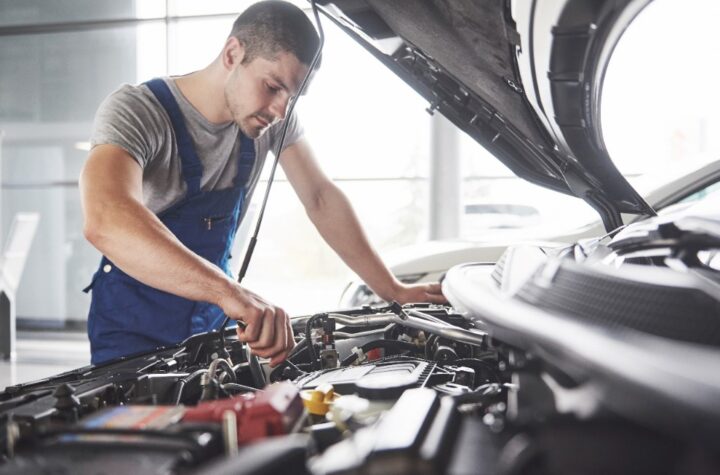
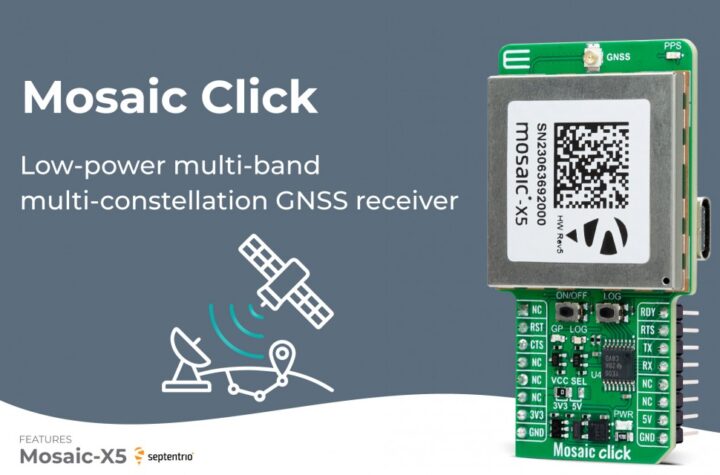
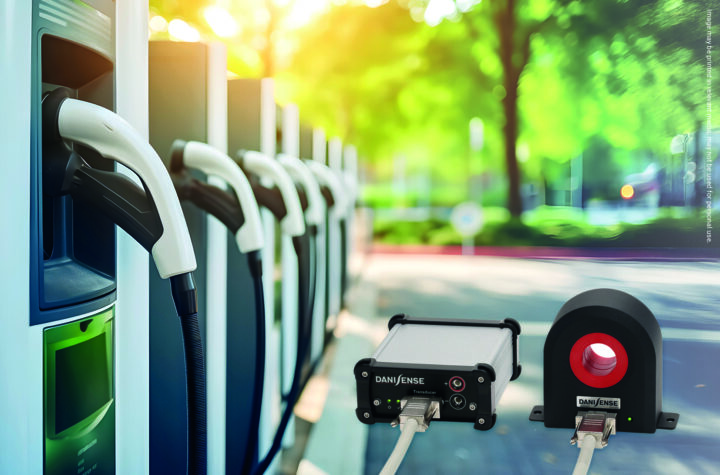
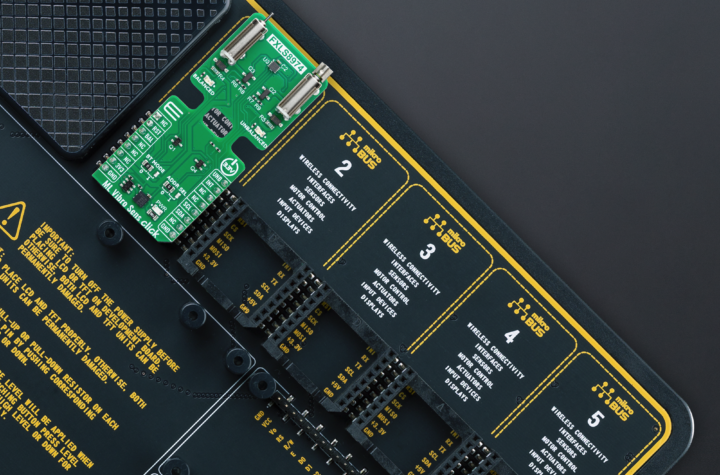
More Stories
Mosaic Click board from MIKROE delivers global coverage multi-band and multi-constellation tracking ability
Current transducer from Danisense selected for DC charging station testing device demonstrator at TU Graz
New Click board from MIKROE helps develop and train ML models for vibration analysis